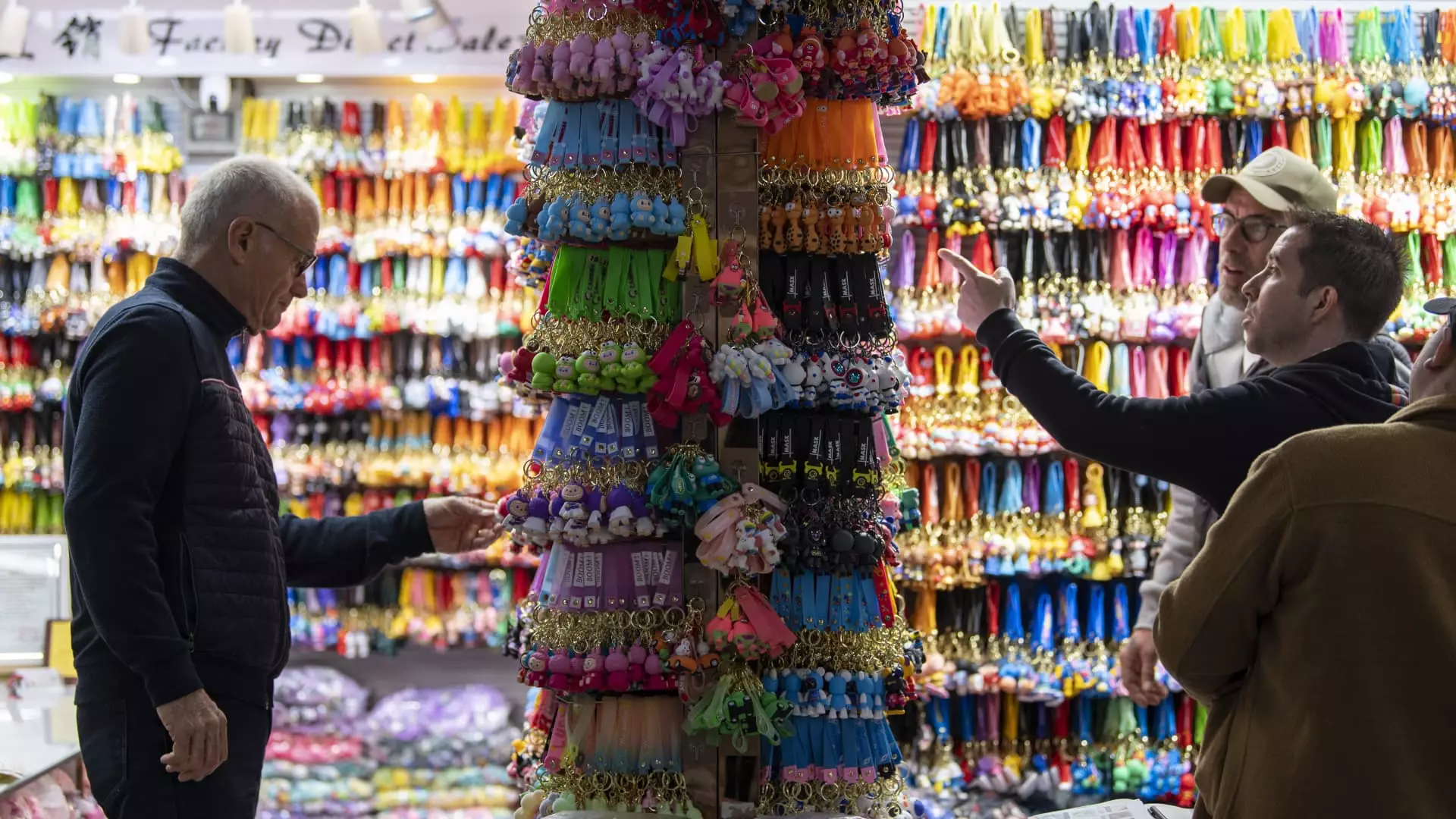Every year, it seems like the holiday decorations pop up earlier on store shelves, and Christmas merchandise starts taking over retail spaces well before Thanksgiving. This consumer-driven phenomenon, often referred to as “Christmas creep,” has become a familiar backdrop to the shopping calendar. However, 2023 will likely show a shift in this well-established trend, not because consumers are less interested, but due to the overshadowing presence of tariffs wreaking havoc on supply chains and retail strategies. Unlike the usual excitement associated with holiday shopping, this year’s post-holiday anticipation reeks of anxiety, marked by the unpredictability of tariffs on imports, particularly from China.
Tariffs function as more than just a trade policy; they embody the uncertainties faced by retailers and manufacturers alike. As U.S. tariffs on Chinese imports jumped from previously unthinkable rates of 34% to a staggering 145%, companies were forced into a reactive stance, halting production and placing orders on indefinite hold. In an economy that thrives on predictability and planning, this turbulence threatens to disrupt what should be a lucrative end-of-year shopping spurt. “If you don’t start producing in the next couple of weeks, you’re going to miss Black Friday and Christmas,” warns Cameron Johnson, a senior partner at consulting firm Tidalwave Solutions. This insistence highlights the urgency that has now overtaken the traditional holiday spirit.
Disrupted Supply Chains: A Domino Effect
The ripple effects of a production delay are far-reaching and multi-layered. A mere pause in the making of a simple product, say a spoon, doesn’t just stall a factory; it halts the entire chain of suppliers involved in its production. As Johnson explains, the upstream suppliers are similarly affected; the compromised systems ripple upwards to steel rolling mills and iron ore smelters. This interconnectedness means that disruptions in the supply chain will have a cumulative impact, affecting numerous industries and businesses that would historically be insulated from one another.
Where does this leave U.S. importers? According to industry analyses, an alarming 36% of U.S. imports from China rely on sources strictly from mainland suppliers—making any attempt to reroute supply chains a Herculean task. Especially in sectors like electronics, where the manufacturing timeline stretches over several months, any delay incurred now could spell disaster once the holiday season hits. Renaud Anjoran, CEO of Agilian Technology, points out that if preparations didn’t begin in March, the chances of meeting holiday delivery timelines dwindle drastically.
Frontloading and Inventory: The Dance of Demand
As the unpredictable nature of tariff policy raged across their operational landscape, many U.S. retailers began frontloading inventory to mitigate potential shortages. This strategic maneuver led to a bizarre spike in China’s exports, which rose by 9.1% this March alone. However, there is growing evidence that these tactics cannot be sustained indefinitely. The number of container ships leaving China for American shores has plummeted in recent weeks, leading to a dramatic increase in canceled shipments—a staggering fourteen-fold rise. What once appeared to be a well-oiled machine is swiftly becoming a chaotic assembly line faced with diminishing orders and rising uncertainty.
Importers, feeling the pinch of higher tariffs and looming deadlines, may find themselves in a dire quandary. Ryan Zhao, a director at Jiangsu Green Willow Textile, encapsulates this sentiment when he remarks on the hesitation of American buyers waiting for potential tariff reductions. This waiting game could halt production entirely, resulting in a lack of goods available for consumers. Each day that passes in economic limbo is another step closer to empty shelves come holiday season.
Retailer Reactions: Navigating Tariff Uncertainty
While some retailers opt to wait and see if tariffs will decrease, others are resorting to tactical measures to protect their margins. Some companies are partially filling their orders just to ensure they won’t face barren storefronts during peak shopping seasons. The retail landscape could become a battlefield, with nimble companies trying to capitalize on temporary tariff exemptions, while others fail to maneuver through these treacherous waters.
What does this mean for the end consumer? Potentially inflated prices, limited availability, or even holiday shopping experiences that diverge wildly from expectations. As businesses scramble to adjust their strategies, the specter of tariffs looms large, prompting product managers to issue clear messages to customers—order now and secure lower prices before uncertainty drives them higher.
The Unintended Consequences of Policy on Holiday Cheer
It’s remarkable how policy decisions can inadvertently alter the fabric of consumer experiences. The tariffs instigated by trade negotiations don’t merely serve as economic levers; they entwine themselves deeply within the lives of individuals across the globe. With nervous anticipation, consumers find themselves navigating limited choices as manufacturers grapple with these restrictions.
With the holidays approaching, it is crucial to reconsider the ramifications of such economic decisions—not just for the corporations involved, but for everyday shoppers eager to partake in the joy of the season. Enhanced efforts from policymakers aimed at stabilizing trade relations could spark a chain reaction that eases the pressure on supply chains and restores a sense of certainty that the holiday shopping experience desperately needs. But, until those changes happen, the Grinch of tariffs remains an omnipresent specter searching for every opportunity to disrupt our anticipated celebrations.

